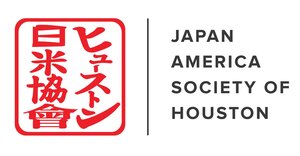Japanese Language Program
Course Descriptions
Just Getting Started (Pre 101-1)
Students learn:
Basic expressions for:
Greetings
Self-introduction
Communicating with front desk clerks at hotels
Communicating with salesclerks
Communicating with taxi drivers, bus drivers, etc.
Buying over-the-counter medication
101-1 | Japanese for Busy People Vol 1 (4th Ed.) | Lessons 1-3
Students learn:
Japanese Phonetic Symbols: Master the basics of Hiragana
Greeting and Self-Introduction Expressions: Acquire common expressions for greetings and self-introductions
Numbers 1 through 10: Learn numbers from 1 to 10
Demonstrative and Interrogative Pronouns: Understand demonstrative pronouns and interrogative pronouns (who, whose, what, what time, how much)
Goals:
Achieve proficiency in recognizing and using Hiragana
Gain insight into Japanese culture
Comprehend the distinctions between Japanese and English syntax
101-2 | Japanese for Busy People Vol 1 (4th Ed.) | Lessons 4-7
Students learn:
Japanese Loan Words: Learn Katakana symbols used for loan words
Large Numbers: Understand numbers greater than 10
Counters: Familiarize yourself with counters for solid items, floppy items, and rod-like or cylindrical items
Interrogative Pronouns: Grasp interrogative pronouns such as "how much," "where," "when," and "with whom"
Verbs of Movement: Learn verbs for "go," "come," and "return"
Vocabulary for Destinations: Expand your vocabulary related to destinations
Particles に: Understand the use of the particle に for direction and time reference
Japanese Currency: Familiarize yourself with Japanese currency
Days of the Week and Month: Learn the days of the week and days of the month
Goals:
Able to recognize Katakana symbols proficiently
Can identify and understand vocabulary related to transportation and destinations
Capable of communicating effectively with salesclerks
Can recognize and understand the prices of merchandise
Destination Arrival Inquiries
103 | Japanese for Busy People Vol 1 (4th Ed.) | Lessons 12-16
Students learn:
The verbs for giving and receiving
Describing locations of things and people
Words for positions, things near a station, office supplies, etc.
The expressions for:
Inviting someone
Making suggestions
Offering to help someone
Goals:
Can ask and describe things’ characteristics in adjectives with appropriate conjugation
Can recognize basic vocabulary
Words for gifts
Events
Places for rendezvous spots
Verbs for offering to do something
Develop conversation skills for the following situation:
Being Invited to a friend's house and commenting about the food served.
Talking about birthday gifts
Talking about the weather
Inviting someone to an event and scheduling for meeting
Accepting an invitation or refusing an invitation
Offering to help someone
104 | Japanese for Busy People Vol 1 (4th Ed.) | Lessons 17-20
Students learn:
Dictionary form of verbs and the Te-form conjugation for various expressions
Verb Masu-Form Stem たいです
Goals:
Express desires effectively
Request using appropriate conjugations
Describe sequences of actions with suitable conjugations
Recognize basic vocabulary related to communications, positions, directions, and giving directions
Develop conversation skills for:
providing directions and estimating travel time
Requesting deliveries
Requesting room service
Describing daily schedules effectively
203 | Minna no Nihongo Vol 1 | Chapters 20-22
Students who have finished Minna no Nihongo Vol. 1 Chapter 19 or at the equivalent level learn:
Suffixes for casual speech
Verbs
I-adjectives
Na-adjectives
Nouns
Embedding a quote in a statement. …と思います、…と言っていました。
Modifying a noun by a relative clause
Goals:
Can talk about duties and responsibilities
Can talk about hobbies and interests
Can talk about experiences and weekend activities
305 | Minna no Nihongo Vol 2 | Chapters 38-40
Students who have finished Minna no Nihongo #2 Chapter 35 - 37、or at the equivalent level.
Grammar
Nominalizer の & こと
Te-Form for cause and effect
Expressing reasons ので
Quoted questions
Goals:
Can construct complicated sentences by inserting nominalized phrases and can differentiate between the two nominalizers, の and こと.
Can describe impressions and feelings including the reason behind them.
Can make statements inserting quoted questions and can ask questions inserting indirect questions.
Intermediate Japanese Across the Four Language Skills | Ch. 5
Reading:
Learn the necessary travel information by reading guides and columns
Conversations:
Change restaurant reservations over the phone
Ask about the menu and place an order at a restaurant
Writing:
Write a description about the characteristics of a tourist destination
Listening:
Listen to a speech by an Italian exchange student on Japanese behavior and have a class discussion about it
